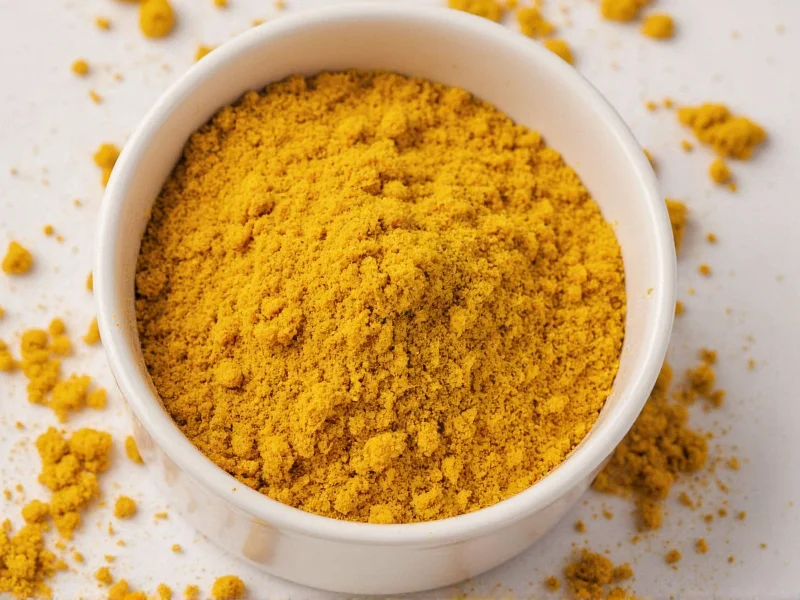Running out of dry mustard while cooking can derail your recipe, but several common pantry items can effectively replace this versatile spice. Dry mustard powder provides that distinctive tangy flavor in marinades, dressings, and sauces without adding liquid, making it a unique ingredient in many recipes. When you need a dry mustard substitute, understanding the flavor profile and functional properties you're trying to replicate is essential for maintaining your dish's intended taste and texture.
Top Dry Mustard Substitutes Explained
Prepared Mustard
When substituting prepared mustard for dry mustard, use a 3:1 ratio (3 parts prepared mustard to 1 part dry mustard). For every teaspoon of dry mustard required, substitute 1 tablespoon of prepared yellow mustard. This works well in salad dressings, barbecue sauces, and meat rubs. Keep in mind that prepared mustard adds moisture to your recipe, so you may need to slightly reduce other liquids. This dry mustard replacement works particularly well when you need that signature mustard tang without the powdered form.
Mustard Seeds
Mustard seeds serve as an excellent dry mustard powder substitute when properly prepared. Use 1½ teaspoons of finely ground mustard seeds to replace 1 teaspoon of dry mustard. For best results, toast the seeds lightly before grinding them in a spice grinder or mortar and pestle. This substitute works beautifully in pickling recipes, spice rubs, and cheese sauces where the texture of whole seeds would be undesirable. When looking for a dry mustard alternative that maintains the authentic mustard flavor profile, freshly ground seeds provide the closest match.
Wasabi Powder
Wasabi powder makes a surprisingly effective substitute for dry mustard, though you'll need to use less due to its stronger heat. Substitute half the amount of wasabi powder for dry mustard (use ½ teaspoon wasabi powder per 1 teaspoon dry mustard). This works particularly well in Asian-inspired marinades and dipping sauces where the flavor profiles complement each other. Be aware that wasabi has a different flavor profile with more heat and less tang than mustard, so this substitution works best when you're seeking that pungent kick rather than the specific mustard flavor.
Turmeric with Vinegar
When no other options are available, create a makeshift dry mustard substitute using turmeric and vinegar. Combine ¼ teaspoon turmeric with a pinch of vinegar or lemon juice for every teaspoon of dry mustard needed. This substitute primarily replaces the color and some of the tanginess but won't replicate mustard's distinctive flavor. It works acceptably in cheese sauces or salad dressings where mustard plays a supporting rather than starring role. This dry mustard replacement ratio is your emergency option when other substitutes aren't available in your pantry.
| Substitute | Ratio | Best For | Limitations |
|---|---|---|---|
| Prepared Mustard | 1 tbsp = 1 tsp dry mustard | Dressings, marinades, sauces | Adds moisture to recipe |
| Ground Mustard Seeds | 1½ tsp = 1 tsp dry mustard | Rubs, cheese sauces, pickling | Requires grinding equipment |
| Wasabi Powder | ½ tsp = 1 tsp dry mustard | Asian dishes, spicy marinades | Stronger heat, different flavor |
| Turmeric + Vinegar | ¼ tsp + pinch = 1 tsp dry mustard | Cheese sauces, color replacement | Doesn't replicate flavor well |
Practical Tips for Using Dry Mustard Substitutes
When replacing dry mustard in your recipes, consider these practical tips to ensure the best results. For salad dressings and vinaigrettes, prepared mustard works exceptionally well as a dry mustard substitute in recipes requiring emulsification. In cheese sauces like nacho cheese or macaroni and cheese, ground mustard seeds provide the closest flavor match without altering the sauce's consistency.
For meat rubs and spice blends, you can often use mustard seeds directly without grinding them if you don't mind the texture. When substituting in baking recipes like cornbread or biscuits, remember that dry mustard often plays a supporting role, so turmeric with vinegar might suffice if other options aren't available. Always add your substitute gradually and taste as you go, as the intensity can vary between brands and freshness levels.
Understanding how to replace dry mustard in recipes properly can save your dish when you're mid-recipe and discover you're out of this essential pantry staple. The key is matching not just the flavor but also considering whether you need the dry form specifically to avoid adding extra liquid to your recipe.











 浙公网安备
33010002000092号
浙公网安备
33010002000092号 浙B2-20120091-4
浙B2-20120091-4